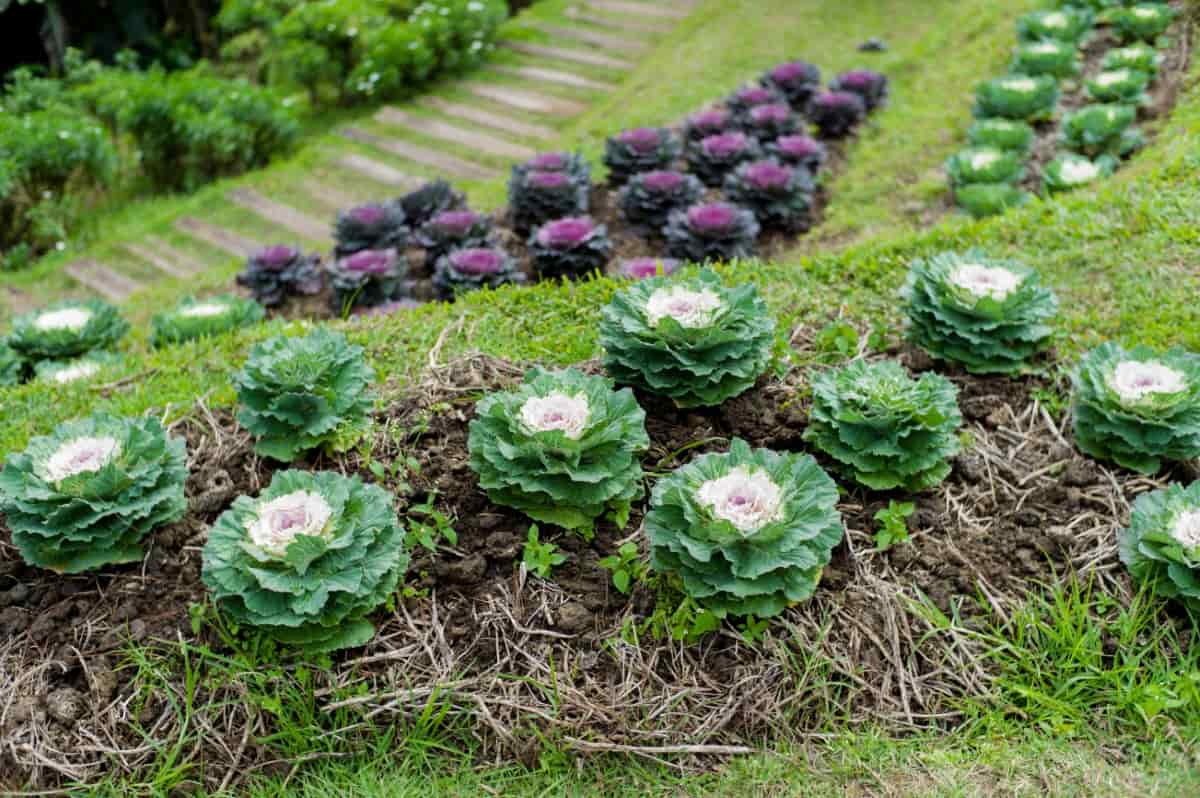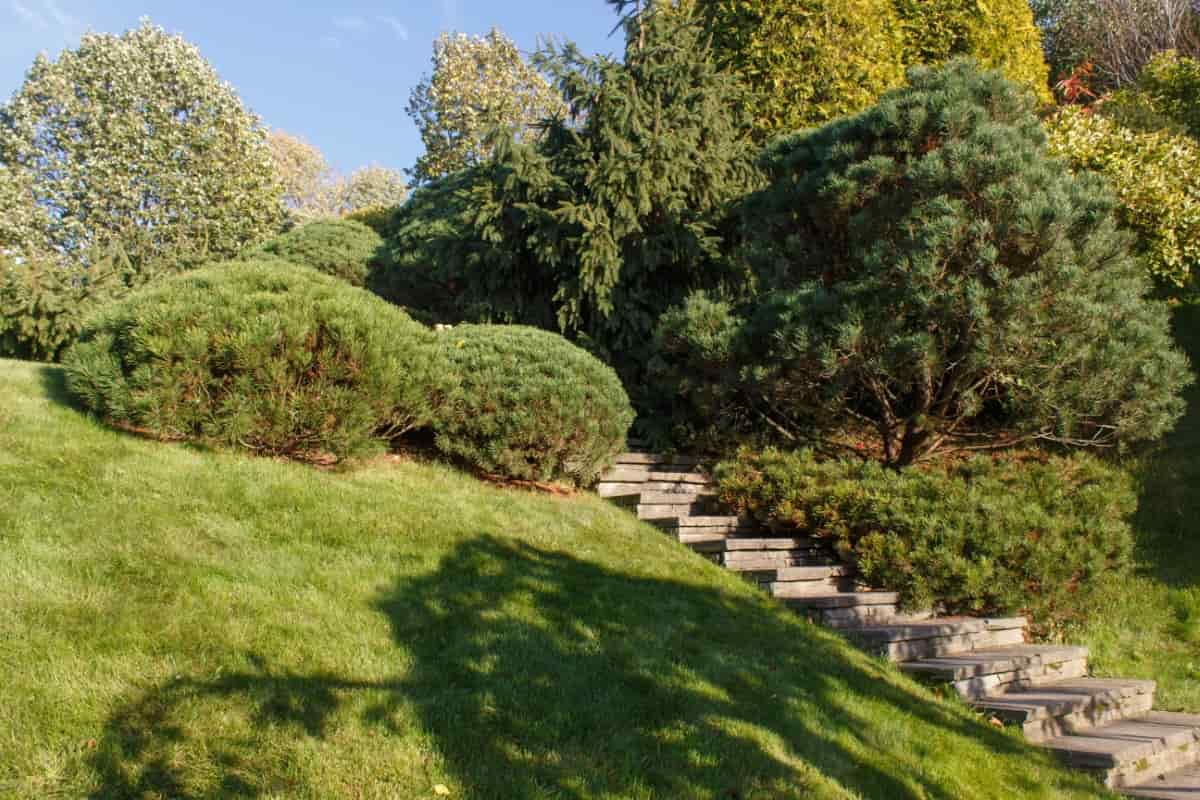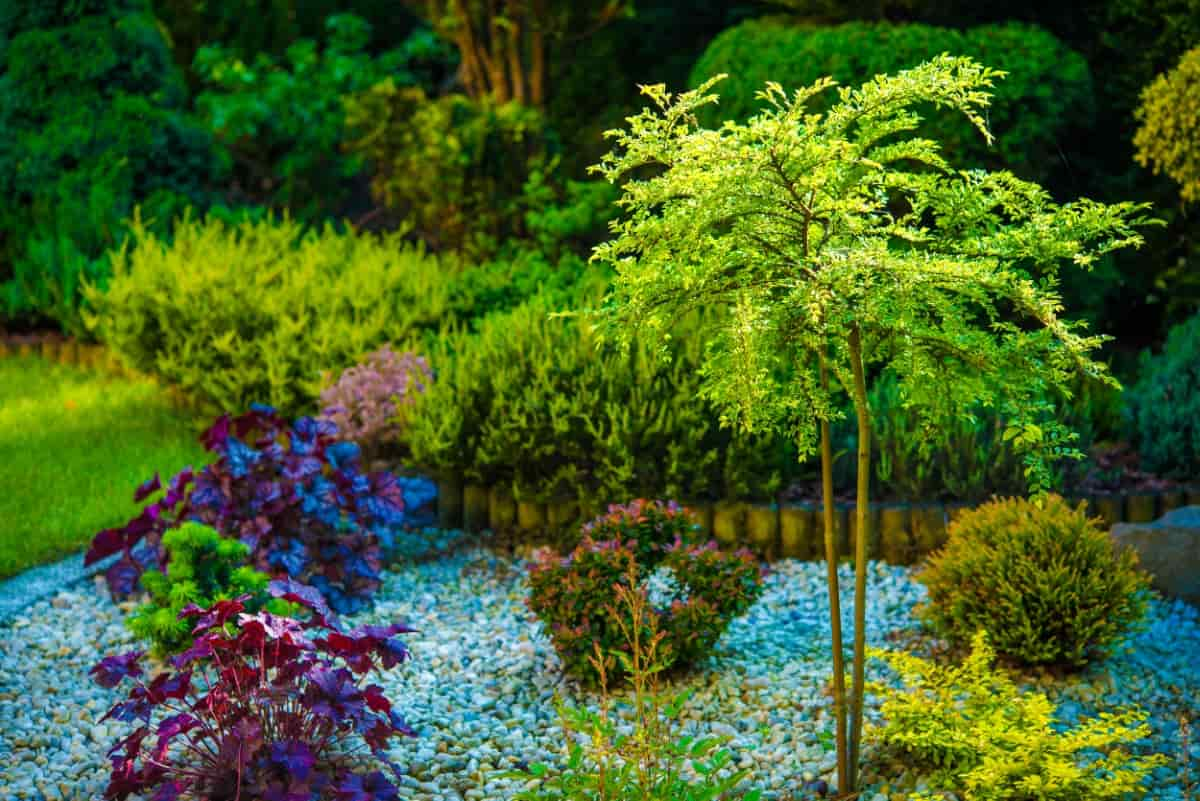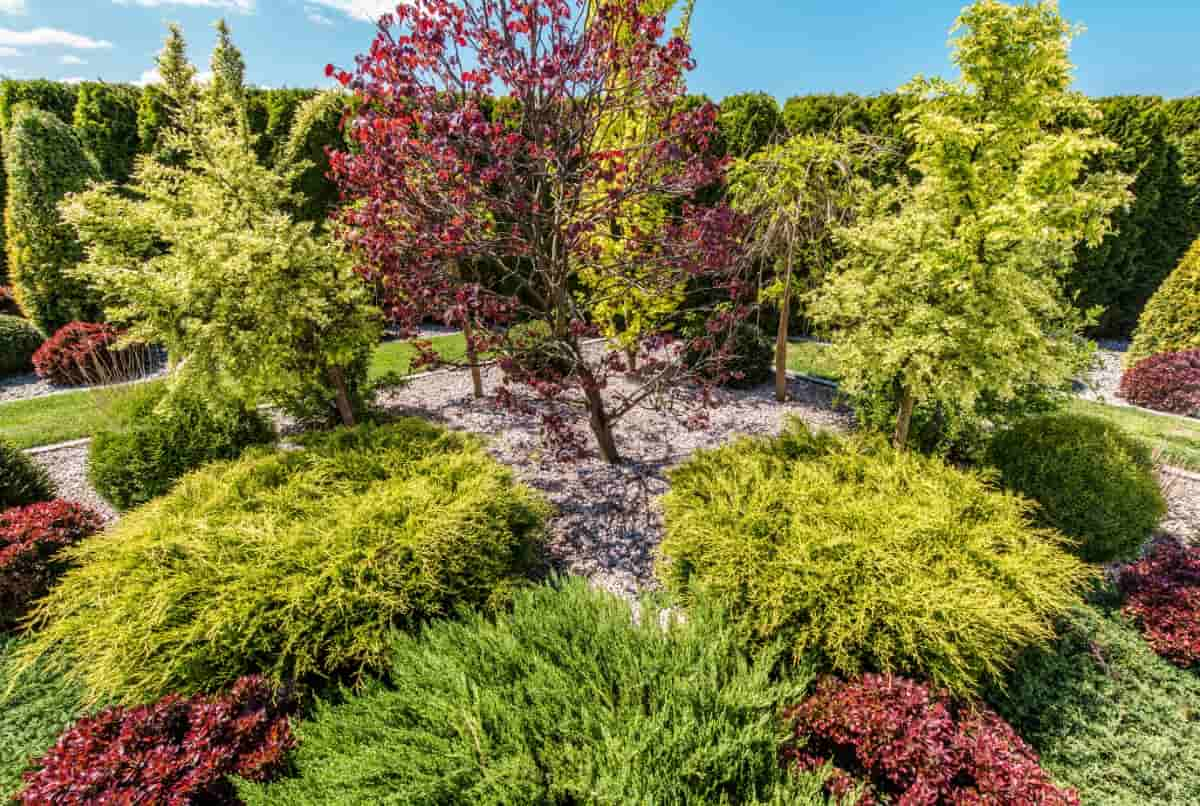Slope gardening involves working with the land’s natural incline to create stunning visual displays while also addressing concerns such as erosion control and soil stabilization. Slope gardening is the art of transforming challenging hillside landscapes into stunning and functional outdoor spaces.

The main challenge of slope gardening is erosion control. Rainwater can easily wash away soil on steep slopes, leading to instability and nutrient loss. However, by carefully selecting plants with strong root systems and incorporating strategies like terracing or retaining walls, erosion can be minimized. On the other hand, gardening on a slope allows for better water drainage compared to flat surfaces. Proper planning can harness this natural runoff to create microclimates that support a variety of plant species.
Assessing Your Slope: Understanding Soil and Drainage
Assessing your slope before planting is crucial for a successful hillside garden. Start by examining the type of soil you have on your slope. Different types like clay, sandy, or loamy soils will affect how water drains and how well roots can establish themselves. Consider the drainage on your slope. Proper drainage is important to prevent erosion and ensure plant health. Perform a simple percolation test by digging a hole, filling this hole with water, and observing how fast it drains. This will give you an idea of how well your soil absorbs water.
Choosing the Right Plants for Slope Stabilization
You’ll want to select varieties with strong root systems capable of holding soil in place. Plants like creeping juniper, ornamental grasses, and groundcovers such as ivy are excellent choices for anchoring the soil on a slope. Consider planting native plant species adapted to your specific climate and soil conditions.
These plants will generally require less maintenance and be more resilient against pests and diseases. Look for plants that can spread quickly to cover large areas of the slope and help prevent erosion. Avoid planting trees with shallow roots or heavy top growth on steep slopes, as they may not provide adequate stability and could potentially increase the risk of landslides.
Terracing: A Step-By-Step Guide for Hillside Gardening
Terracing is a popular technique for hillside gardening that not only adds visual interest but also helps with erosion control and plant growth. To start terracing your slope, begin by marking out the terrace levels using stakes and string to create even-level platforms. Next, dig into the hillside to create flat surfaces for each terrace level. Once your terraces are in place, add a layer of nutrient-rich soil to support plant growth. Select plants that are suitable for specific climate conditions, and consider placing taller plants towards the back of each terrace for a layered effect.
In case you missed it: Landscape Gardening Ideas, Design, Techniques

Retaining Walls: Types and Installation for Slopes
Retaining walls play a major role in slope gardening, providing stability and preventing erosion. When it comes to types of retaining walls, you have various options to choose from based on your aesthetic preferences and the functionality needed for your particular slope. Installation of retaining walls requires careful planning and consideration of factors like drainage and soil composition.
Whether you opt for a gravity wall design or one that requires reinforcement with geogrids, ensuring proper construction is key to the success of your slope garden. Professional help may be necessary for more complex installations, especially on steep slopes where engineering expertise is vital.
Ground Cover Options for Erosion Control
Ground covers not only help stabilize the soil but also add beauty to your hillside landscape. One popular option is planting creeping plants like vinca or ivy, which spread quickly and create a dense mat of roots to hold the soil in place. Another effective choice is using ornamental grasses such as blue fescue or fountain grass, which have deep root systems that can help control erosion on steep slopes.
These grasses not only provide stability but also add texture to your garden design. For a more colorful touch, consider planting low-growing perennials like sedum or thyme. These plants not only help prevent erosion but also create visual interest with their vibrant blooms and foliage.
Water Management Strategies for Sloped Gardens
Water management is important for maintaining a healthy garden on a slope. One effective strategy is to create contour trenches along the slope to capture rainwater and prevent erosion. By redirecting water flow, you can ensure that your plants receive adequate moisture without causing soil runoff.
In case you missed it: Cheap Backyard Landscaping Ideas, Tips, and Secrets

Another method is to install drip irrigation systems that deliver water directly to the base of plants, minimizing waste and encouraging deep root growth. Consider planting native vegetation with deep root systems that can better withstand periods of drought. Regularly monitoring your garden’s watering needs based on weather conditions and plant requirements will help you adjust your watering schedule accordingly.
Pathways and Steps: Navigating Your Slope with Ease
Pathways and steps are essential elements in making your slope accessible while adding visual interest to the landscape. When designing pathways on a slope, consider the natural flow of the land. Utilize materials like gravel, flagstone, or pavers for your pathways. These options provide stability underfoot and blend well with the natural surroundings.
Additionally, incorporating steps into steeper areas will make navigating your slope easier and safer. Choose plants that can thrive alongside your pathways to enhance their beauty. Adding lighting along the paths can create a magical ambiance during evening strolls through your garden sanctuary.
Using Mulch and Rocks to Prevent Erosion
Maintaining a sloping garden has challenges, especially when it comes to erosion control. One effective way to combat erosion on a slope is by strategically utilizing mulch and rocks. Mulch helps retain soil moisture while preventing runoff during heavy rain. Choose from organic mulches like wood chips or straws for better water absorption.
In case you missed it: Avoid These 14 Common Landscaping Mistakes to Keep Your Yard Looking Tidy and Beautiful

Rocks can also play a crucial role in preventing erosion on a slope. Placing larger rocks strategically along the base of the slope can help slow down water flow and minimize soil displacement. Additionally, smaller rocks or gravel can be used to create pathways that aid in redirecting water away from vulnerable areas. Combining mulch and rocks serves a practical purpose and also adds aesthetic value to your hillside landscaping.
Maintenance Tips for a Thriving Slope Garden
Maintaining a sloping garden requires regular attention to ensure its health and beauty. Start by inspecting the area for any signs of erosion or soil movement. Check your retaining walls for stability and repair any damages promptly. Prune your plants to increase healthy growth and prevent overcrowding. Monitor the drainage on your slope to prevent water accumulation, which can lead to erosion. Adjust irrigation schedules as needed based on weather conditions and plant requirements.
Keep an eye out for pests and diseases that could harm your plants, treating them promptly to avoid spreading. Gardening on a slope presents both challenges and opportunities for creating beautiful and functional landscapes. By carefully implementing these gardening strategies, you can create a hillside landscape that not only enhances the beauty of your property but also functions effectively and sustainably for years to come.
- How to Grow Hibiscus from Flower
- Plantation Ideas for Home Decoration: A Beginners Guide
- Flower Garden Designs and Layouts for Beginners
- Planting and Spacing Techniques in Papaya: A Beginner’s Guide
- Growing Gold: Essential Techniques for Planting Pineapples
- How to Make Kalanchoe Plant Bushy: Home Remedies and Solutions
- 11 Reasons Why Your Gardenia is Not Blooming: Home Remedies and Solutions
- Eco Elegance: The Guide to Designing a Drought-Tolerant Landscape
- Gardening on a Slope: Strategies for Hillside Landscaping